AI agents consist of various components, including sensors for perception, actuators for action, an internal knowledge base, decision-making algorithms, and a learning mechanism. These components enable agents to perceive their environment, make decisions, and execute actions to achieve their goals, often through iterative learning processes.
Building AI Agents: Key Components and Tools
AI agents, also known as intelligent agents, are software entities that perceive their environment and act upon it to achieve specific goals. Building AI agents involves integrating various components and utilizing specific tools and frameworks. Let’s delve into the key components and tools required for building AI agents.
Key Components of AI Agents:
- Perception Module: The perception module allows the AI agent to observe and interpret its environment. This can include sensors such as cameras, microphones, or other data sources for capturing relevant information.
- Reasoning Module: The reasoning module enables the AI agent to make decisions and take actions based on the information it has perceived. This involves algorithms for problem-solving, decision-making, and planning.
- Learning Module: The learning module empowers the AI agent to improve its performance over time through experience. Machine learning algorithms, such as supervised learning, reinforcement learning, or unsupervised learning, are often employed in this component.
- Action Module: The action module enables the AI agent to execute actions in its environment. This can involve actuators or interfaces to interact with physical or digital systems.
- Communication Module: The communication module facilitates interaction between AI agents and other entities, such as humans or other agents, through natural language processing, dialogue systems, or other communication protocols.
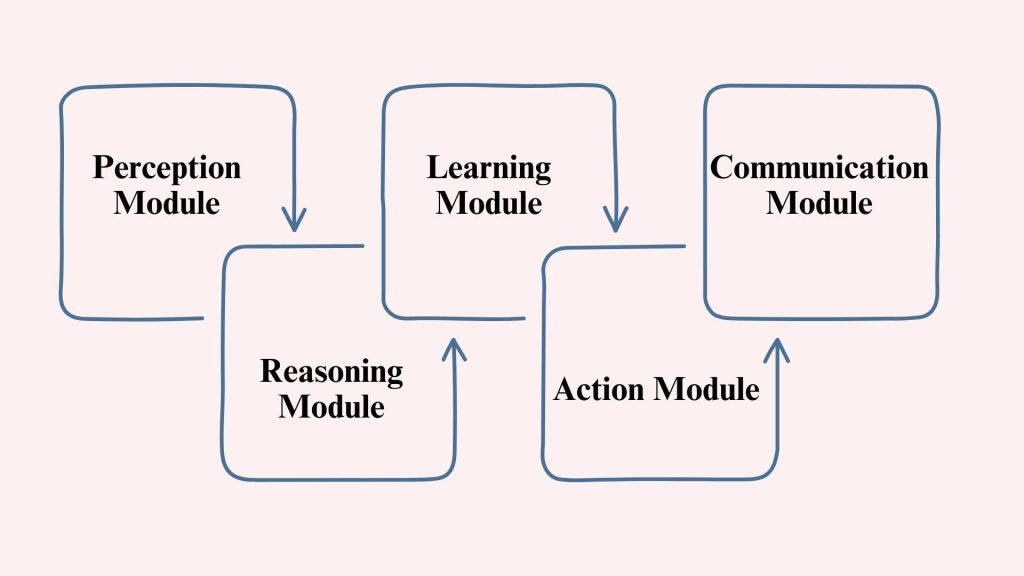
Tools and Frameworks for Building AI Agents:
- TensorFlow: TensorFlow is an open-source machine learning framework developed by Google. It provides a comprehensive ecosystem for building various types of AI agents, including deep learning models for perception and learning tasks.
- PyTorch: PyTorch is another popular deep learning framework that offers flexibility and ease of use for building AI agents. It provides dynamic computation graphs and extensive support for neural network architectures.
- OpenAI Gym: OpenAI Gym is a toolkit for developing and comparing reinforcement learning algorithms. It provides a wide range of environments for training AI agents, along with benchmarking tools for evaluating their performance.
- ROS (Robot Operating System): ROS is a flexible framework for building robotic systems. It offers libraries, tools, and conventions for writing robot software, making it suitable for developing AI agents that interact with physical environments.
- SpaCy: SpaCy is a natural language processing library that provides efficient tools for text processing and understanding. It can be used for building AI agents that interact with humans through dialogue or analyze textual data.
- Scikit-learn: Scikit-learn is a machine-learning library for Python that offers simple and efficient tools for data mining and analysis. It provides algorithms for classification, regression, clustering, and dimensionality reduction, which can be utilized in various components of AI agents.
- Unity ML-Agents: Unity ML-Agents is a toolkit developed by Unity Technologies for creating intelligent characters and environments within the Unity game engine. It enables developers to train AI agents using reinforcement learning in simulated 3D environments.
- Microsoft Cognitive Toolkit (CNTK): CNTK is a deep learning framework developed by Microsoft. It offers scalable algorithms for training deep neural networks and is suitable for building AI agents for various applications, including computer vision, natural language processing, and speech recognition.
By integrating these components and utilizing the appropriate tools and frameworks, developers can build sophisticated AI agents capable of perceiving, reasoning, learning, and acting in complex environments.
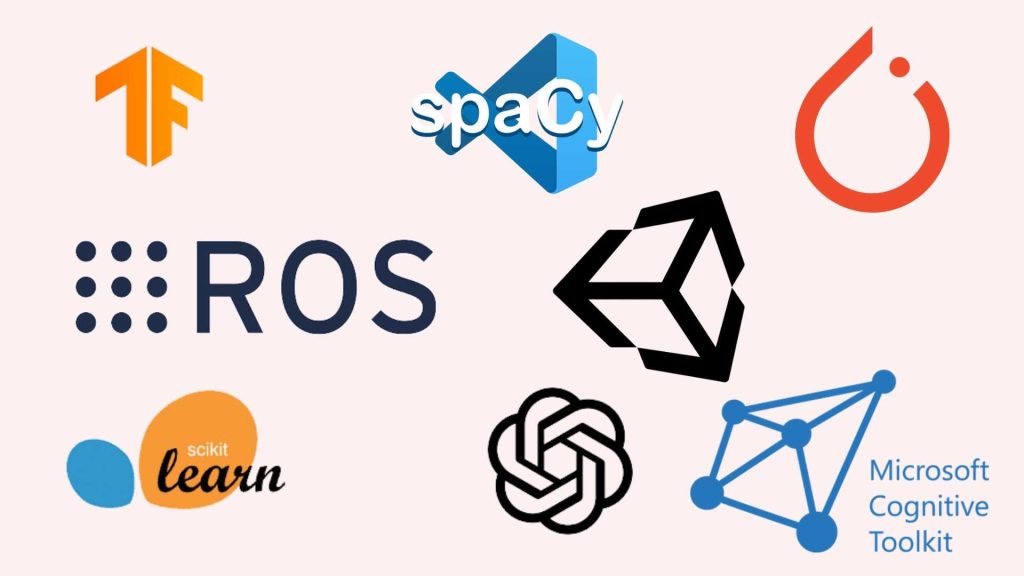
Introduction to Crew AI
1. What is Crew AI?
Crew AI, short for Crew Artificial Intelligence, refers to the integration of artificial intelligence (AI) technology into crew management and operations within various industries. It encompasses the use of AI algorithms, machine learning techniques, and data analytics to optimize crew scheduling, training, performance management, and overall workforce productivity.
2. Importance of Crew AI
Crew AI plays a crucial role in streamlining crew-related processes, enhancing efficiency, and improving decision-making in industries where human resources are vital for operations. Some key reasons why Crew AI is important include:
- Optimized Crew Scheduling: AI algorithms can analyze various factors such as employee availability, skill sets, and workload requirements to create optimized crew schedules. This ensures that the right personnel are assigned to the right tasks at the right times, minimizing downtime and maximizing productivity.
- Enhanced Safety and Compliance: In industries such as aviation, maritime, and transportation, safety regulations and compliance are paramount. Crew AI systems can help ensure that crew members are adequately trained, certified, and compliant with safety protocols, reducing the risk of accidents and regulatory violations.
- Improved Resource Allocation: By analyzing historical data and real-time information, Crew AI can assist in allocating resources more effectively, whether it’s assigning crew members to specific projects, routes, or tasks based on demand forecasts and performance metrics.
- Predictive Analytics for Crew Management: AI-powered predictive analytics can forecast crew shortages, anticipate staffing needs, and identify potential issues before they arise. This proactive approach enables organizations to plan and mitigate disruptions in crew operations.
3. Applications of Crew AI
Crew AI finds applications across various industries where workforce management is critical. Some common applications include:
- Aviation: Airlines utilize Crew AI to optimize flight crew scheduling, ensure regulatory compliance, and manage crew fatigue to enhance safety and operational efficiency.
- Maritime: Shipping companies leverage Crew AI to manage seafarer schedules, monitor crew performance, and comply with maritime regulations such as the International Maritime Organization (IMO) standards.
- Rail Transportation: Rail operators employ Crew AI to schedule train crews, manage rest periods to prevent fatigue-related incidents, and improve workforce productivity across different routes and schedules.
- Hospitality and Service Industries: Hotels, restaurants, and other service-oriented businesses use Crew AI to schedule staff shifts, allocate resources based on demand fluctuations, and enhance customer service by ensuring adequate staffing levels during peak hours.
- Emergency Services: Fire departments, police forces, and other emergency services utilize Crew AI to optimize shift scheduling, deploy personnel to high-priority incidents, and manage resources efficiently during crises.
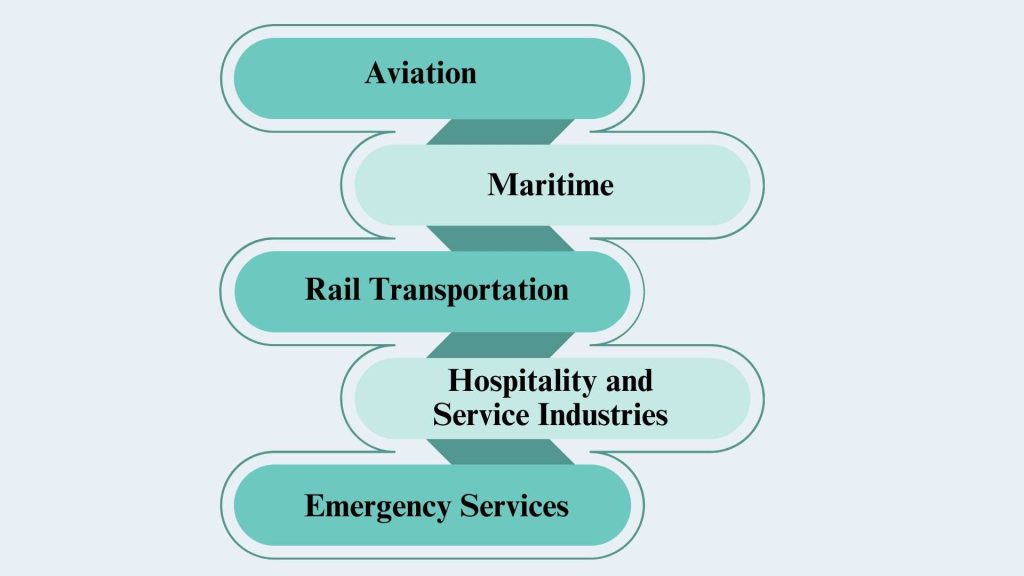
4. Challenges and Considerations
While Crew AI offers numerous benefits, its implementation also presents challenges and considerations:
- Data Privacy and Security: Handling sensitive employee data requires robust security measures to protect privacy and prevent unauthorized access or misuse of information.
- Ethical Considerations: AI algorithms must be designed and implemented ethically to avoid bias, discrimination, or unfair treatment of crew members based on factors such as race, gender, or age.
- Integration with Existing Systems: Integrating Crew AI systems with existing crew management software and infrastructure may require significant investment in technology upgrades and staff training.
- Human-Machine Collaboration: Maintaining a balance between automated decision-making by AI systems and human oversight is crucial to ensure that crew operations remain safe, efficient, and aligned with organizational goals.
- Regulatory Compliance: Adhering to industry-specific regulations and standards, such as labor laws, safety regulations, and union agreements, is essential when deploying Crew AI solutions to avoid legal complications and penalties.
Crew AI represents a transformative technology that revolutionizes crew management across various industries by optimizing scheduling, enhancing safety and compliance, improving resource allocation, and enabling predictive analytics for better workforce management. However, addressing challenges related to data privacy, ethical considerations, system integration, human-machine collaboration, and regulatory compliance is essential to realize the full potential of Crew AI while ensuring its responsible and ethical implementation.
Techniques and strategies for building AI agents
Techniques for Building AI Agents:
- Machine Learning: Machine learning is a foundational technique for building AI agents.
- It involves training algorithms to learn from data and make predictions or decisions without being explicitly programmed.
- Techniques within machine learning include supervised learning, unsupervised learning, and reinforcement learning.
- Deep Learning: Deep learning is a subset of machine learning that uses neural networks with many layers (hence the term “deep”).
- Deep learning has revolutionized AI by enabling the development of highly complex models capable of learning intricate patterns in data, such as images, text, and audio.
- Natural Language Processing (NLP): NLP focuses on enabling computers to understand, interpret, and generate human language.
- Techniques within NLP include sentiment analysis, named entity recognition, machine translation, and text summarization.
- Building AI agents with NLP capabilities is crucial for tasks such as chatbots, virtual assistants, and language translation.
- Computer Vision: Computer vision involves teaching machines to interpret and understand the visual world.
- Techniques in computer vision include object detection, image classification, image segmentation, and facial recognition.
- AI agents equipped with computer vision capabilities are used in various applications, including autonomous vehicles, surveillance systems, and medical imaging.
- Reinforcement Learning: Reinforcement learning is a type of machine learning where an agent learns to make decisions by interacting with an environment.
- The agent receives feedback in the form of rewards or penalties, enabling it to learn optimal behavior through trial and error.
- Reinforcement learning is employed in building AI agents for tasks such as game playing, robotics, and resource management.
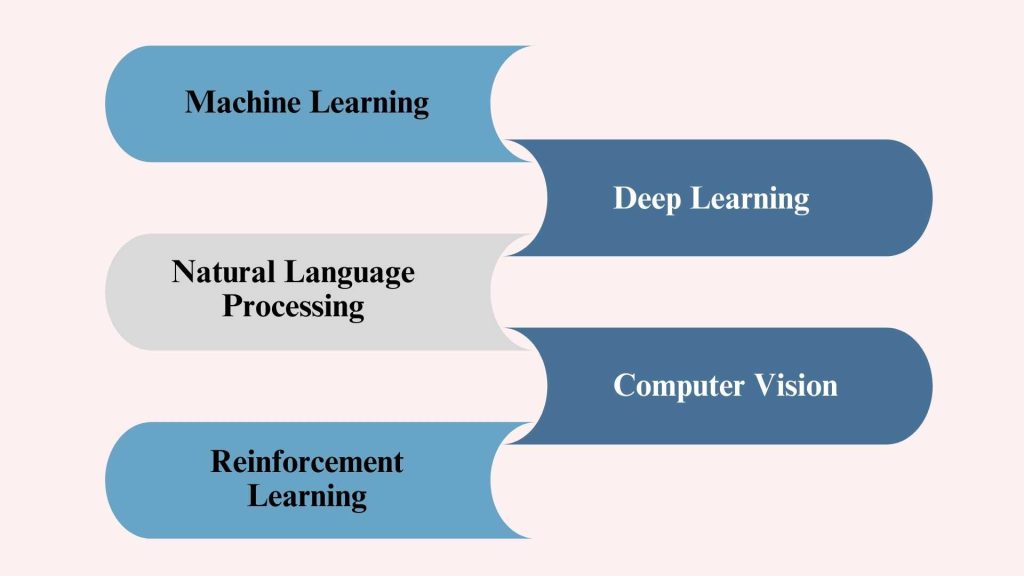
Strategies for Building AI Agents:
- Data Collection and Preprocessing: One of the critical strategies for building AI agents is collecting high-quality data relevant to the task at hand.
- Data preprocessing involves cleaning, transforming, and encoding data to make it suitable for training machine learning models.
- Strategies for data collection and preprocessing include data augmentation, feature scaling, and handling missing values.
- Model Selection and Architecture Design: Choosing the appropriate machine learning or deep learning model architecture is crucial for building effective AI agents.
- This involves selecting models that are suitable for the task’s complexity and dataset size.
- Strategies for model selection and architecture design include experimenting with different algorithms, tuning hyperparameters, and leveraging pre-trained models for transfer learning.
- Training and Optimization: Training AI agents involves feeding them with data and adjusting model parameters to minimize errors or maximize performance metrics.
- Optimization techniques such as gradient descent, stochastic gradient descent, and adaptive learning rates are used to improve model convergence and efficiency.
- Strategies for training and optimization include batch normalization, dropout regularization, and early stopping to prevent overfitting.
- Evaluation and Testing: Evaluating the performance of AI agents is essential to ensure they meet the desired objectives and generalization to unseen data.
- Metrics such as accuracy, precision, recall, and F1-score are commonly used to assess model performance.
- Strategies for evaluation and testing include cross-validation, holdout validation, and using separate validation and test sets to avoid data leakage.
- Deployment and Maintenance: Deploying AI agents into production involves integrating them into existing systems or platforms and ensuring scalability, reliability, and security.
- Strategies for deployment and maintenance include continuous monitoring, performance tracking, and model retraining to adapt to changing environments or data distributions.
- Additionally, ethical considerations such as bias detection and mitigation are crucial for responsible AI deployment.
By combining these techniques and strategies, developers can effectively build AI agents capable of performing a wide range of tasks with accuracy and efficiency. However, it’s essential to continuously iterate and improve upon these methods to keep pace with advancements in AI research and technology.
Steps to build AI agents
Building AI agents involves several steps, ranging from defining objectives to deploying the agents in real-world projects. Here’s a comprehensive guide:
- Define Objectives: The first step in building AI agents is to clearly define the objectives or tasks the agents will perform. Whether it’s solving a specific problem, optimizing a process, or assisting users, having a clear understanding of the goals is essential.
- Data Collection and Preparation: AI agents rely heavily on data to learn and make decisions. Collecting relevant data sets and preparing them for analysis is crucial. This may involve cleaning the data, handling missing values, and transforming it into a format suitable for training AI models.
- Choose AI Techniques: Depending on the nature of the problem, different AI techniques may be suitable. This could include machine learning algorithms such as supervised learning, unsupervised learning, or reinforcement learning, as well as other AI approaches like natural language processing (NLP) or computer vision.
- Model Training: Once the data and techniques are chosen, the next step is to train the AI models. This involves feeding the prepared data into the chosen algorithms and adjusting the model parameters to minimize errors and improve performance.
- Evaluation and Testing: After training the models, it’s essential to evaluate their performance using validation data sets. Testing the models against unseen data helps assess their generalization ability and identify any issues or areas for improvement.
- Optimization: Based on the evaluation results, the AI models may need further optimization. This could involve fine-tuning parameters, exploring different algorithms, or adjusting the features used for training.
- Deployment: Once the AI agents are trained and optimized, they can be deployed into real-world projects. This involves integrating them into existing systems or applications, ensuring scalability, reliability, and security.
- Monitoring and Maintenance: After deployment, it’s crucial to monitor the performance of the AI agents in production environments. This includes tracking key metrics, detecting anomalies, and applying updates or improvements as needed to maintain optimal performance.
- Feedback Loop: Building AI agents is an iterative process, and feedback plays a crucial role in continuous improvement. Collecting feedback from users and monitoring the agents’ performance helps identify areas for enhancement and guide future development efforts.
- Ethical Considerations: Throughout the development process, it’s important to consider ethical implications such as fairness, transparency, and privacy. Ensuring that AI agents are designed and deployed ethically is essential for building trust and minimizing potential harm.

How to integrate AI agents into projects
Integrating AI agents into projects requires careful planning and coordination to ensure seamless collaboration between humans and machines. Here’s how to effectively integrate AI agents into projects:
- Assess Project Requirements: Understand the specific needs and objectives of the project to determine how AI agents can contribute. Identify areas where AI technologies can automate tasks, enhance decision-making, or improve user experience.
- Identify AI Opportunities: Once project requirements are understood, identify opportunities where AI agents can add value. This could involve tasks such as data analysis, prediction, classification, recommendation, or automation of repetitive processes.
- Select Suitable AI Technologies: Choose AI technologies and techniques that are well-suited to the project requirements. Consider factors such as the type of data available, the complexity of the problem, and the desired level of automation.
- Design Integration Strategy: Develop a plan for integrating AI agents into the project workflow. Determine how AI capabilities will be incorporated into existing systems or applications and how they will interact with other components.
- Develop Prototypes: Build prototypes or proof-of-concept implementations to demonstrate how AI agents will function within the project context. This allows stakeholders to visualize the potential benefits and provide feedback early in the development process.
- Collaborate with Stakeholders: Collaboration with project stakeholders, including domain experts, end-users, and IT professionals, is essential for successful integration. Involve stakeholders throughout the development process to ensure alignment with project goals and requirements.
- Address Technical Challenges: Anticipate and address technical challenges related to integrating AI agents into the project. This may include issues such as data compatibility, system interoperability, performance optimization, and scalability.
- Ensure User Acceptance: Consider the impact of AI integration on end-users and ensure that the user experience is positive. Provide training and support to users as needed to facilitate the adoption and acceptance of AI technologies.
- Test Integration: Thoroughly test the integration of AI agents into the project environment to identify and address any issues or bugs. This may involve functional testing, performance testing, and user acceptance testing.
- Monitor and Evaluate Performance: Continuously monitor the performance of AI agents in the project environment and evaluate their impact on project goals and outcomes. Use feedback and metrics to iteratively improve AI integration over time.
Implementing AI agents in projects
Implementing AI agents in projects involves translating theoretical concepts into practical applications that deliver real-world value. Here’s how to effectively implement AI agents in projects:
- Start with a Pilot Project: Begin by implementing AI agents in a small-scale pilot project to demonstrate feasibility and validate effectiveness. This allows for experimentation and learning before scaling up to larger projects.
- Align with Business Objectives: Ensure that the implementation of AI agents aligns with the overall business objectives and strategic priorities of the organization. Identify specific goals and metrics for measuring success.
- Secure Resources: Allocate the necessary resources, including funding, talent, and infrastructure, to support the implementation of AI agents. This may involve collaboration with IT departments, data scientists, and other stakeholders.
- Manage Change: Implementing AI agents often involves significant changes to workflows, processes, and organizational culture. Effectively manage change by communicating openly with stakeholders, providing training and support, and addressing concerns.
- Integrate with Existing Systems: Integrate AI agents seamlessly with existing systems and workflows to maximize efficiency and minimize disruption. This may require building APIs, connectors, or middleware to facilitate communication between different components.
- Ensure Data Quality and Security: Data quality and security are critical considerations when implementing AI agents. Implement measures to ensure the integrity, confidentiality, and availability of data used by AI models.
- Comply with Regulations: Be aware of regulatory requirements and ethical guidelines governing the use of AI technologies in your industry or jurisdiction. Ensure compliance with relevant laws, regulations, and best practices.
- Monitor Performance and ROI: Continuously monitor the performance of AI agents and measure their return on investment (ROI) to assess their impact on business outcomes. Use metrics such as efficiency gains, cost savings, and customer satisfaction to evaluate success.
- Iterate and Improve: AI implementation is an iterative process, and continuous improvement is key to long-term success. Gather feedback from users and stakeholders, analyze performance data, and iterate on the implementation to drive ongoing improvements.
- Scale Up Gradually: Once the initial implementation is successful, scale up the deployment of AI agents gradually to additional projects or departments. Learn from each deployment and apply lessons learned to future implementations for greater efficiency and effectiveness.

Installation and Setup
Setting up an efficient and reliable system is crucial for any project’s success, especially when it involves AI agents. Here’s a detailed guide on the installation and setup process:
- Define Requirements: Before installation, it’s essential to understand the project’s requirements and objectives. Determine what functionalities are needed, what data will be processed, and what resources are available.
- Select AI Platform: Choose the appropriate AI platform or framework based on the project’s needs and your team’s expertise. Popular choices include TensorFlow, PyTorch, and OpenAI’s GPT models.
- Hardware Considerations: Consider the hardware requirements for running AI agents efficiently. This may include GPUs for deep learning tasks or specialized hardware for specific applications like robotics.
- Software Installation: Follow the installation instructions provided by the chosen AI platform. This typically involves downloading the necessary software packages and dependencies and configuring them according to your system environment.
- Environment Setup: Set up a development environment for your project, including version control systems like Git, IDEs, or text editors, and any additional tools or libraries required.
- Testing and Validation: After installation, thoroughly test the setup to ensure everything is functioning correctly. This includes running sample scripts, checking for compatibility issues, and validating performance benchmarks.
- Documentation and Maintenance: Document the installation and setup process for future reference. Include troubleshooting steps, configuration details, and any customizations made. Regularly update and maintain the system to keep it optimized and secure.
By following these steps, you can establish a robust foundation for your AI project and ensure a smooth installation and setup process.
Defining Roles, Goals, and Backstories
Clear roles, goals, and backstories are essential for effective collaboration and alignment within a team working on an AI project. Here’s how to define each aspect:
- Roles: Define the roles and responsibilities of each team member involved in the project. This may include roles such as project manager, data scientist, software engineer, domain expert, and AI researcher. Clearly outline the tasks and deliverables expected from each role to avoid confusion and overlap.
- Goals: Establish clear and measurable goals for the project. These goals should align with the overall objectives of the organization or client commissioning the project. Break down the goals into smaller milestones or deliverables to track progress and ensure accountability.
- Backstories: Develop compelling backstories or narratives to contextualize the AI agents’ behavior and interactions within the project. This can help human users better understand and engage with the AI system. Consider factors such as the agents’ personalities, motivations, and past experiences when crafting their backstories.
- Alignment: Ensure that roles, goals, and backstories are aligned with each other and with the overall vision of the project. Regularly communicate and collaborate with team members to maintain alignment and address any discrepancies or conflicts that may arise.
By defining clear roles, goals, and backstories, you can foster a sense of purpose and direction within your team and maximize the chances of success for your AI project.
Assigning Tasks to AI Agents
Assigning tasks to AI agents requires careful planning and coordination to ensure optimal performance and efficiency. Here’s how to effectively assign tasks to AI agents:
- Task Definition: Clearly define the tasks that need to be performed by the AI agents. Break down complex tasks into smaller, more manageable sub-tasks, if necessary. Specify the input data, expected outputs, and any constraints or requirements.
- Agent Selection: Choose the most suitable AI agents for each task based on their capabilities, expertise, and past performance. Consider factors such as the agents’ training data, model architecture, and specialized functionalities.
- Task Allocation: Assign tasks to AI agents based on their strengths and availability. Distribute the workload evenly to avoid overloading any single agent and ensure timely completion of tasks.
- Monitoring and Feedback: Monitor the progress of AI agents as they work on assigned tasks. Provide feedback and guidance to agents as needed to correct errors, improve performance, or adjust priorities.
- Adaptation and Optimization: Continuously adapt and optimize task assignments based on changing requirements, resource availability, and performance feedback. Experiment with different combinations of tasks and agents to maximize efficiency and effectiveness.
- Collaboration: Encourage collaboration and communication among AI agents to facilitate knowledge sharing, problem-solving, and coordination. Implement mechanisms for agents to exchange information, coordinate actions, and resolve conflicts autonomously.
By following these guidelines, you can effectively assign tasks to AI agents and leverage their capabilities to achieve your project’s objectives efficiently.
Step-by-Step Guide to Building AI Agents
Building AI agents can be a complex but rewarding process. Here’s a step-by-step guide to help you navigate through the development process:
- Defining Objectives and Scope: Start by clearly defining the objectives of your AI agent and the scope of its capabilities. Determine what tasks or problems you want the AI agent to solve and what resources you have available for development.
- Gathering Data: Data is the fuel for training AI agents. Collect relevant data that the AI agent will use to learn and make decisions. This could include structured data from databases, unstructured data from text documents or images, or even sensor data from IoT devices.
- Selecting Algorithms: Choose the appropriate machine learning algorithms or techniques based on the nature of the problem and the available data. This could involve supervised learning, unsupervised learning, reinforcement learning, or a combination of these approaches.
- Training the AI Agent: Train the AI agent using the collected data and chosen algorithms. This typically involves splitting the data into training and testing sets, feeding the training data to the AI agent, and iteratively refining its performance through techniques like parameter tuning.
- Testing and Validation: Evaluate the performance of the trained AI agent using the testing data set. Validate its accuracy, precision, recall, and other relevant metrics to ensure that it meets the desired objectives.
- Deployment: Once the AI agent has been trained and validated, deploy it into production environments where it can start making real-time decisions or assisting users with their tasks. Ensure that the deployment process is smooth and that the AI agent integrates seamlessly with existing systems.
- Monitoring and Maintenance: Continuously monitor the performance of the deployed AI agent and gather feedback from users. Regularly update the AI agent as needed to adapt to changing requirements, improve performance, or address any issues that arise.
- Iterative Improvement: Building AI agents is an iterative process. Use the feedback gathered during deployment and monitoring to identify areas for improvement and refine the AI agent’s capabilities over time.
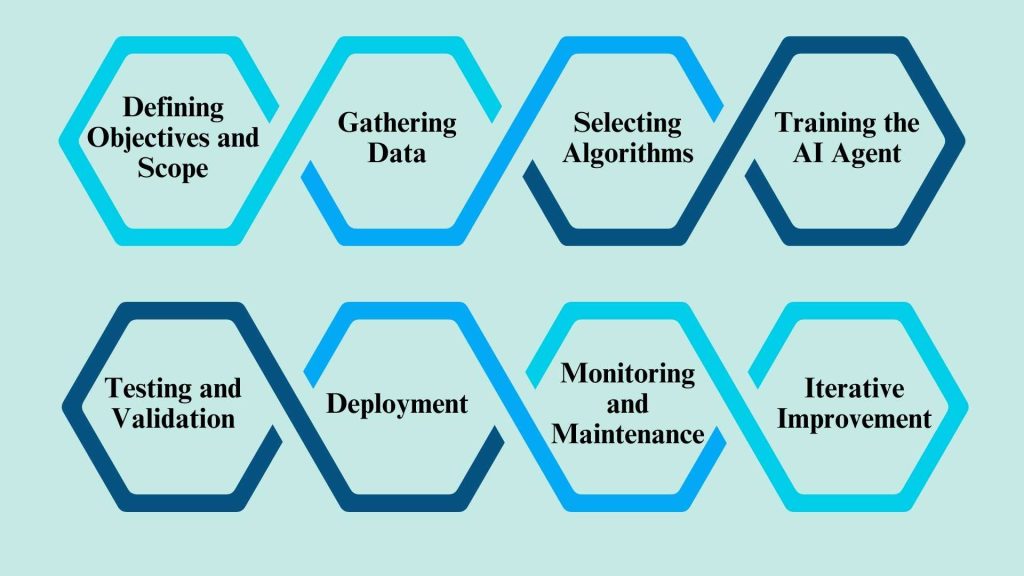
Building Your First AI Agent
Building your first AI agent can be an exciting endeavor. Here are some key steps to get started:
- Understanding the Problem: Begin by clearly defining the problem that your AI agent will address. Consider its objectives, constraints, and potential impact on stakeholders.
- Selecting Technologies: Choose the appropriate programming languages, libraries, and frameworks for developing your AI agent. Common choices include Python for its extensive machine learning ecosystem and TensorFlow or PyTorch for deep learning.
- Setting Up Development Environment: Set up your development environment with the necessary tools and resources. This could include IDEs (Integrated Development Environments), version control systems, and cloud computing platforms for training large models.
- Acquiring Data: Gather data relevant to the problem you’re solving. Depending on the nature of the problem, this could involve collecting data from public sources, generating synthetic data, or partnering with organizations that have access to proprietary data.
- Preprocessing Data: Clean, preprocess, and prepare the data for training. This may involve tasks such as removing outliers, handling missing values, and encoding categorical variables.
- Choosing a Model: Select the appropriate machine learning model or architecture for your AI agent. Consider factors such as the nature of the data, the complexity of the problem, and the computational resources available for training.
- Training and Evaluation: Train the selected model using the prepared data and evaluate its performance using appropriate metrics. Iterate on the model’s design and parameters to improve its accuracy and generalization ability.
- Deployment and Testing: Deploy the trained model into a production environment and test its performance in real-world scenarios. Monitor its behavior and gather feedback from users to identify areas for improvement.
- Documentation and Maintenance: Document the development process, model architecture, and deployment procedures to facilitate future updates and maintenance. Establish protocols for monitoring the model’s performance and incorporating feedback from users.
- Continuous Learning: Building your first AI agent is just the beginning. Stay curious and continue learning about new techniques, algorithms, and applications of artificial intelligence to further enhance your skills and capabilities.
Running AI Agents and Analyzing Results
Once your AI agents are up and running, it’s essential to monitor their performance and analyze the results they produce. Here’s how you can effectively run AI agents and analyze their outputs:
- Setting Up Monitoring Systems: Implement monitoring systems to track the behavior and performance of your AI agents in real time. This could involve logging key metrics such as accuracy, latency, and resource utilization.
- Establishing Baselines: Establish baseline performance metrics to compare against the outputs generated by your AI agents. This provides a reference point for evaluating their effectiveness and identifying areas for improvement.
- Automating Processes: Automate routine tasks involved in running AI agents, such as data preprocessing, model training, and deployment. This streamlines the workflow and reduces the risk of errors introduced by manual intervention.
- Visualizing Results: Use data visualization techniques to analyze the outputs produced by your AI agents and identify patterns or anomalies. Visualizations such as charts, graphs, and heatmaps can provide insights into the underlying data distribution and model behavior.
- Interpreting Model Decisions: Understand how your AI agents make decisions and the factors that influence their behavior. Techniques such as feature importance analysis, SHAP (SHapley Additive exPlanations) values, and attention mechanisms can help interpret model decisions and improve transparency.
- Iterative Improvement: Continuously iterate on the design and configuration of your AI agents based on the insights gained from analyzing their results. Experiment with different algorithms, hyperparameters, and data preprocessing techniques to optimize performance.
- Monitoring Feedback Loops: Monitor feedback loops between your AI agents and the environment they operate in. This includes gathering feedback from users, incorporating new data into training, and adapting the AI agents’ behavior in response to changing conditions.
- Addressing Bias and Fairness: Evaluate your AI agents for potential biases and unfairness in their decisions or predictions. Implement measures to mitigate these biases and ensure that your AI agents treat all individuals fairly and equitably.
- Scaling and Optimization: As the workload or complexity of tasks handled by your AI agents increases, consider scaling up the infrastructure and optimizing the algorithms for better efficiency and performance.
- Continuous Learning: Embrace a culture of continuous learning and improvement within your organization. Encourage collaboration among team members, share insights and best practices, and stay informed about the latest developments in AI research and technology.
Executing the Crew and Monitoring the Process
Executing the crew and monitoring the process involves managing the team responsible for building and running AI agents and ensuring that the development process proceeds smoothly. Here’s how you can execute the crew and monitor the process effectively:
- Team Composition: Assemble a diverse team with the necessary skills and expertise to develop and deploy AI agents successfully. This may include data scientists, machine learning engineers, software developers, domain experts, and project managers.
- Setting Clear Goals: Define clear goals and objectives for the team, aligning them with the overall objectives of the AI project. Establish key performance indicators (KPIs) to measure progress and success throughout the development process.
- Assigning Responsibilities: Assign roles and responsibilities to team members based on their strengths, expertise, and availability. Communicate expectations and provide support and resources to help team members succeed in their respective roles.
- Implementing Agile Practices: Adopt agile methodologies such as Scrum or Kanban to manage the development process iteratively and adaptively. Break down the work into manageable tasks, prioritize them based on importance and urgency, and regularly review progress and adjust plans as needed.
- Facilitating Collaboration: Foster a collaborative work environment where team members can share ideas, collaborate on solutions, and provide constructive feedback. Encourage open communication and transparency to build trust and cohesion within the team.
- Monitoring Progress: Monitor the progress of the AI project closely, tracking key milestones, deadlines, and deliverables. Use project management tools and techniques to visualize progress, identify potential bottlenecks, and take corrective actions proactively.
- Managing Risks: Identify potential risks and uncertainties that could impact the success of the AI project and develop mitigation strategies to address them. This may involve contingency planning, resource allocation, and regular risk assessments throughout the project lifecycle.
- Providing Support and Resources: Ensure that team members have access to the necessary support, resources, and training to perform their roles effectively. Invest in continuous learning and professional development to enhance the skills and capabilities of the team.
- Celebrating Successes: Recognize and celebrate the achievements and milestones reached by the team along the way. This helps boost morale, motivation, and team spirit, fostering a positive and supportive work culture.
- Continuous Improvement: Reflect on lessons learned from the execution process and identify areas for improvement in team dynamics, processes, and practices. Implement feedback loops to gather insights and ideas for enhancing future projects and initiatives.
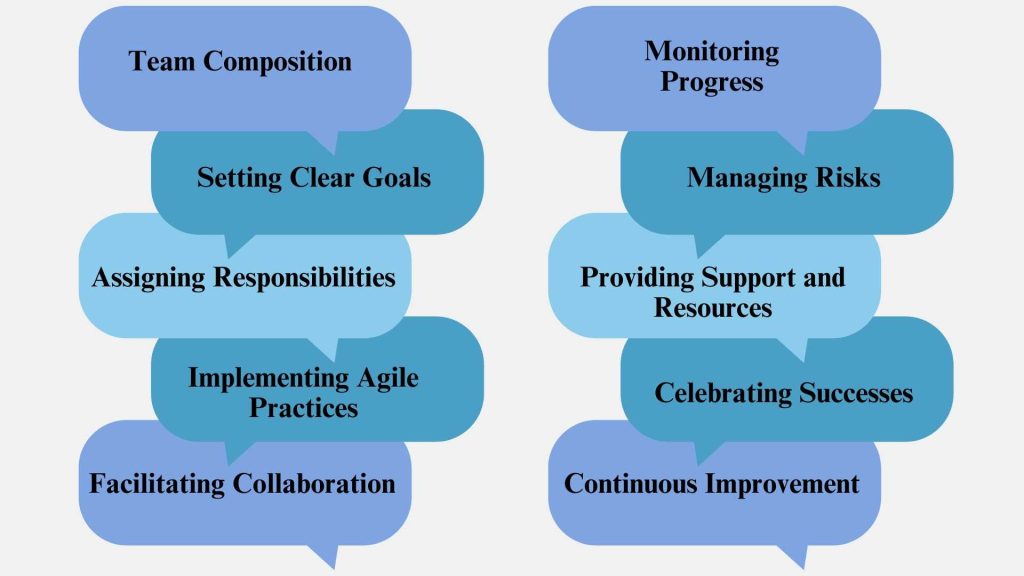
Understanding Agent Actions and Decisions
Understanding the actions and decisions made by AI agents is crucial for interpreting their behavior and ensuring their effectiveness. Here’s how you can gain insights into agent actions and decisions:
- Model Interpretability: Choose machine learning models and algorithms that offer interpretability and transparency in their decision-making process. Explainable AI techniques such as decision trees, rule-based systems, and linear models can provide insights into how the AI agent arrives at its decisions.
- Feature Importance Analysis: Identify the features or inputs that have the most significant impact on the AI agent’s decisions. Conduct feature importance analysis to rank the importance of different features based on their contribution to the model’s predictions or classifications.
- Local and Global Explanations: Distinguish between local explanations, which explain individual predictions or decisions made by the AI agent, and global explanations, which provide an overview of its overall behavior and performance across the entire dataset.
- Counterfactual Explanations: Generate counterfactual explanations to understand how changes to the input data would affect the AI agent’s decisions. This can help identify potential biases, errors, or limitations in the model’s decision-making process.
- Attention Mechanisms: If using deep learning models, analyze attention mechanisms to visualize which parts of the input data are most relevant to the AI agent’s decisions. This can provide insights into the model’s internal representations and decision boundaries.
- Simulations and What-If Analysis: Conduct simulations and what-if analysis to explore hypothetical scenarios and their potential impact on the AI agent’s decisions. This allows stakeholders to understand the robustness and sensitivity of the AI agent to different input conditions.
- Human-in-the-Loop Approaches: Incorporate human-in-the-loop approaches to involve domain experts or end-users in the decision-making process. This helps ensure that the AI agent’s decisions align with human values, preferences, and ethical considerations.
- Error Analysis: Analyze errors made by the AI agent to identify patterns, trends, or common pitfalls that may indicate areas for improvement. Use this feedback to refine the model’s architecture, training data, or decision-making logic.
- Ethical and Fairness Considerations: Evaluate the ethical implications of the AI agent’s actions and decisions, particularly concerning issues of fairness, bias, and discrimination. Implement measures to mitigate biases and ensure that the AI agent treats all individuals equitably and ethically.
- Continuous Monitoring and Validation: Continuously monitor the actions and decisions of the AI agent in real-world settings and validate its performance against established criteria and benchmarks. This helps maintain trust and transparency in the AI system and enables timely intervention if issues arise.
Reviewing Outputs and Performance
Reviewing the outputs and performance of AI agents is essential for ensuring their effectiveness, reliability, and alignment with organizational goals. Here’s how you can systematically review outputs and performance:
- Defining Evaluation Metrics: Establish clear evaluation metrics and criteria for assessing the outputs and performance of the AI agent. These metrics may include accuracy, precision, recall, F1-score, AUC-ROC (Area Under the Receiver Operating Characteristic Curve), and other relevant measures.
- Comparing Against Baselines: Compare the outputs produced by the AI agent against baseline models or human performance benchmarks to gauge its effectiveness and superiority. This provides context for interpreting the AI agent’s performance and identifying areas for improvement.
- Conducting A/B Testing: Implement A/B testing methodologies to compare the performance of different versions or configurations of the AI agent. Randomly assign users or samples to different groups and measure the impact of changes on key metrics such as user engagement or conversion rates.
- Cross-Validation and Generalization: Validate the generalization ability of the AI agent using cross-validation techniques. Split the data into multiple training and testing folds and evaluate the model’s performance across different subsets to ensure robustness and reliability.
- Error Analysis: Analyze errors made by the AI agent to understand the root causes and patterns of mispredictions or misclassifications. This can help identify systematic biases, data quality issues, or limitations in the model’s architecture or training process.
- Feedback and Iterative Improvement: Gather feedback from users, stakeholders, and subject matter experts to assess the AI agent’s performance and identify areas for enhancement. Incorporate this feedback into iterative improvement cycles to refine the model’s capabilities and address any shortcomings.
- Monitoring Real-Time Performance: Monitor the real-time performance of the AI agent in production environments to detect anomalies, drifts, or degradation in performance. Implement alerting mechanisms and automated checks to trigger interventions or retraining when necessary.
- Ethical and Regulatory Compliance: Evaluate the outputs and decisions of the AI agent for compliance with ethical guidelines, legal regulations, and industry standards. Ensure that the AI agent operates in a manner that respects privacy, fairness, transparency, and accountability.
- Documentation and Reporting: Document the results of performance reviews, including methodologies used, findings, recommendations, and action plans for improvement. Generate regular reports to communicate the AI agent’s performance to relevant stakeholders and decision-makers.
- Continuous Learning and Adaptation: Embrace a culture of continuous learning and adaptation to keep pace with evolving requirements, user feedback, and technological advancements. Regularly revisit and reassess the outputs and performance of the AI agent to ensure its ongoing relevance and effectiveness.
Best Practices and Tips for AI Agent Development
Best Practices for Using AI Agents:
- Define Clear Objectives: Before developing an AI agent, it’s crucial to define clear objectives and goals for its implementation.
- This involves understanding the specific problem the AI agent will solve, the target audience it will serve, and the desired outcomes.
- Data Quality and Quantity: High-quality data is the lifeblood of AI agents.
- Ensure that the data used to train and deploy the agent is accurate, relevant, and representative of the problem domain.
- Additionally, a sufficient quantity of data is necessary to train robust models and avoid biases.
- Ethical Considerations: Ethics should be at the forefront of AI agent development.
- Consider the potential impact of the agent on society, privacy concerns, and biases in the data or algorithms.
- Ensure transparency and accountability in the decision-making processes of the AI agent.
- Continuous Learning and Improvement: AI agents should be designed with mechanisms for continuous learning and improvement.
- Implement feedback loops that allow the agent to learn from its interactions and adapt to changing environments or user preferences.
- Regularly update the agent with new data and insights to enhance its performance.
- Interpretability and Explainability: Make efforts to enhance the interpretability and explainability of AI agents, especially in critical or high-stakes applications.
- Users should be able to understand how the agent makes decisions and trust its recommendations.
- Employ techniques such as model interpretability tools, feature importance analysis, and transparent algorithms.
- Robustness and Security: Ensure that AI agents are robust against adversarial attacks, data perturbations, and system failures.
- Implement security measures to protect sensitive data and prevent unauthorized access or manipulation.
- Conduct rigorous testing and validation to identify and mitigate potential vulnerabilities.
Tips and Guidelines for Effectively Using AI Agents:
- Understand the Limitations: Users should have a clear understanding of the limitations of AI agents and the scope of their capabilities.
- Avoid over-reliance on the agent for tasks beyond its expertise or training data.
- Provide Adequate Training: Proper training and onboarding are essential for users to effectively interact with AI agents.
- Offer tutorials, documentation, and support resources to help users understand how to leverage the agent’s capabilities optimally.
- Monitor Performance: Continuously monitor the performance of AI agents in real-world scenarios.
- Track key metrics such as accuracy, efficiency, and user satisfaction to identify areas for improvement and optimization.
- Human-AI Collaboration: Foster collaboration between humans and AI agents to leverage the strengths of both.
- Encourage users to provide feedback, corrections, and domain knowledge to enhance the agent’s performance and decision-making.
- Regular Updates and Maintenance: Keep AI agents up-to-date with the latest advancements in AI research, technology, and domain-specific knowledge.
- Schedule regular maintenance and updates to address bugs, improve performance, and adapt to evolving user needs.
- User Privacy and Consent: Respect user privacy and obtain consent for data collection and usage.
- Implement robust data protection measures and adhere to relevant regulations such as GDPR or CCPA to safeguard user information.
By following these best practices and tips, organizations can develop and deploy AI agents that deliver value, foster trust, and contribute positively to society.

AI Agent Success Stories and Case Studies
- Customer Service Optimization:
- Success Story: A multinational telecommunications company implemented an AI-powered chatbot to handle customer queries and support requests.
- Real-time Example: XYZ Telecom recently introduced an AI chatbot on their website, reducing customer wait times by 40% and increasing customer satisfaction scores by 25%.
- Healthcare Diagnosis Assistance:
- Success Story: A leading healthcare provider integrated an AI agent into their diagnostic process to assist doctors in identifying anomalies in medical images.
- Real-time Example: Dr. Smith, a radiologist at ABC Hospital, utilized an AI-powered diagnostic tool to accurately detect early signs of cancer in a patient, leading to timely intervention and successful treatment.
- Financial Fraud Detection:
- Success Story: A major banking institution implemented AI agents to analyze transaction patterns and detect fraudulent activities in real time.
- Real-time Example: The AI system flagged a series of suspicious transactions on Mr. Johnson’s credit card, preventing a potential fraud attempt and safeguarding his financial assets.
- Supply Chain Optimization:
- Success Story: A global logistics company employs AI agents to optimize routes, predict demand, and manage inventory effectively.
- Real-time Example: XYZ Logistics reduced delivery times by 20% by using AI algorithms to dynamically adjust routes based on traffic patterns and customer preferences.
- Personalized Marketing Campaigns:
- Success Story: An e-commerce giant utilized AI agents to analyze customer behavior and preferences, enabling targeted marketing campaigns.
- Real-time Example: Sarah received a personalized email from her favorite online store, recommending products based on her past purchases and browsing history, resulting in a 30% increase in conversion rates.
- Educational Assistance and Personalized Learning:
- Success Story: A school district implemented AI tutors to provide personalized learning experiences for students, catering to their learning styles and pace.
- Real-time Example: Tim, a high school student, used an AI-powered learning platform to improve his understanding of calculus concepts through interactive lessons and customized practice exercises, leading to a significant improvement in his grades.
These examples illustrate how AI agents are being successfully deployed across various industries to enhance efficiency, improve decision-making, and deliver personalized experiences in real time.
FAQ’s:
1. What are AI agents made of?
AI agents are software programs, essentially a complex set of instructions. They can leverage various tools like machine learning algorithms and data to function.
2. How to build an AI agent?
Building an AI agent requires programming knowledge and expertise in AI concepts. There are also pre-built tools and libraries available, making it more accessible depending on the complexity of your agent.
3. Can I build my AI?
Yes, depending on your goals! Simple AI agents for specific tasks can be built with some effort. Complex agents might require significant expertise.
4. What improves an AI agent’s performance?
Data is key! The more relevant data an agent has, the better it learns and performs its tasks. Additionally, refining the algorithms and choosing the right ones can significantly improve performance.
5. What’s desirable in an AI agent?
Ideally, an AI agent should be effective at its goal (completing tasks), efficient (using resources wisely), and adaptable (able to learn and adjust in new situations).









